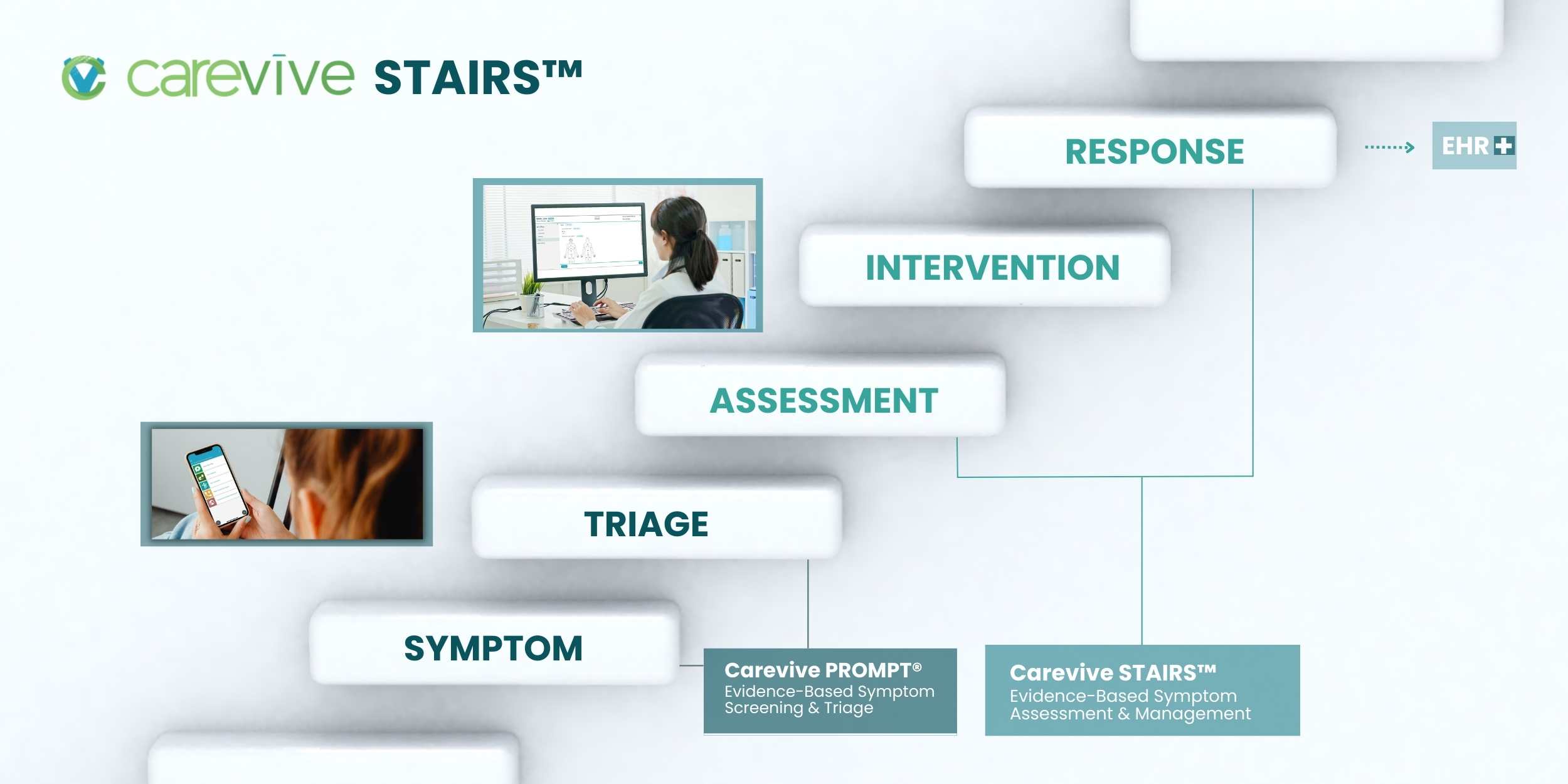After five years of intense product development in collaboration with leading internationally-recognized oncology supportive care experts, Carevive is pleased to announce Carevive STAIRS™ is commercially available for our cancer center partners. This product was made possible because of a generous multi-million dollar contract provided to Carevive by the NIH’s National Cancer Institute.
Introducing Carevive STAIRS™
Carevive STAIRS™
Symptom Triage, Assessment, Intervention, and Response System

Computerized Cancer Symptom Management Pathways
Carevive STAIRS™ are the first-ever computerized cancer symptom management pathways, which when combined with Carevive PROmpt®, enables cancer care teams to proactively identify and resolve cancer symptoms before they become problematic, often leading to treatment holds, treatment discontinuations, or hospitalizations, all of which negatively impact treatment outcomes.
Domain |
Problem |
STAIRS Solutions |
|---|---|---|
| Care Team Efficiencies | Unstructured assessments results in omissions, multiple calls…inefficient for nurses, providers | Evidence-based, computerized algorithms with branching logic includes all appropriate triage questions, improving nurse and provider triage efficiency |
| Cancer Care Quality | Patients don’t discuss symptoms until severe (increasing avoidable health care utilization) | PROmpt + STAIRS enables scalable proactive monitoring & management before problematic (avoiding holds or health care utilization) |
| Patient Engagement | Patients frustrated by telephone triage/time for call returns | Patients comforted knowing they are being monitored by care team, will call when appropriate |
| Provider/Nurse Satisfaction | Overburdened; can’t keep current on changing evidence | Assured knowing monitoring/management decisions supported by current evidence-based guidelines |

